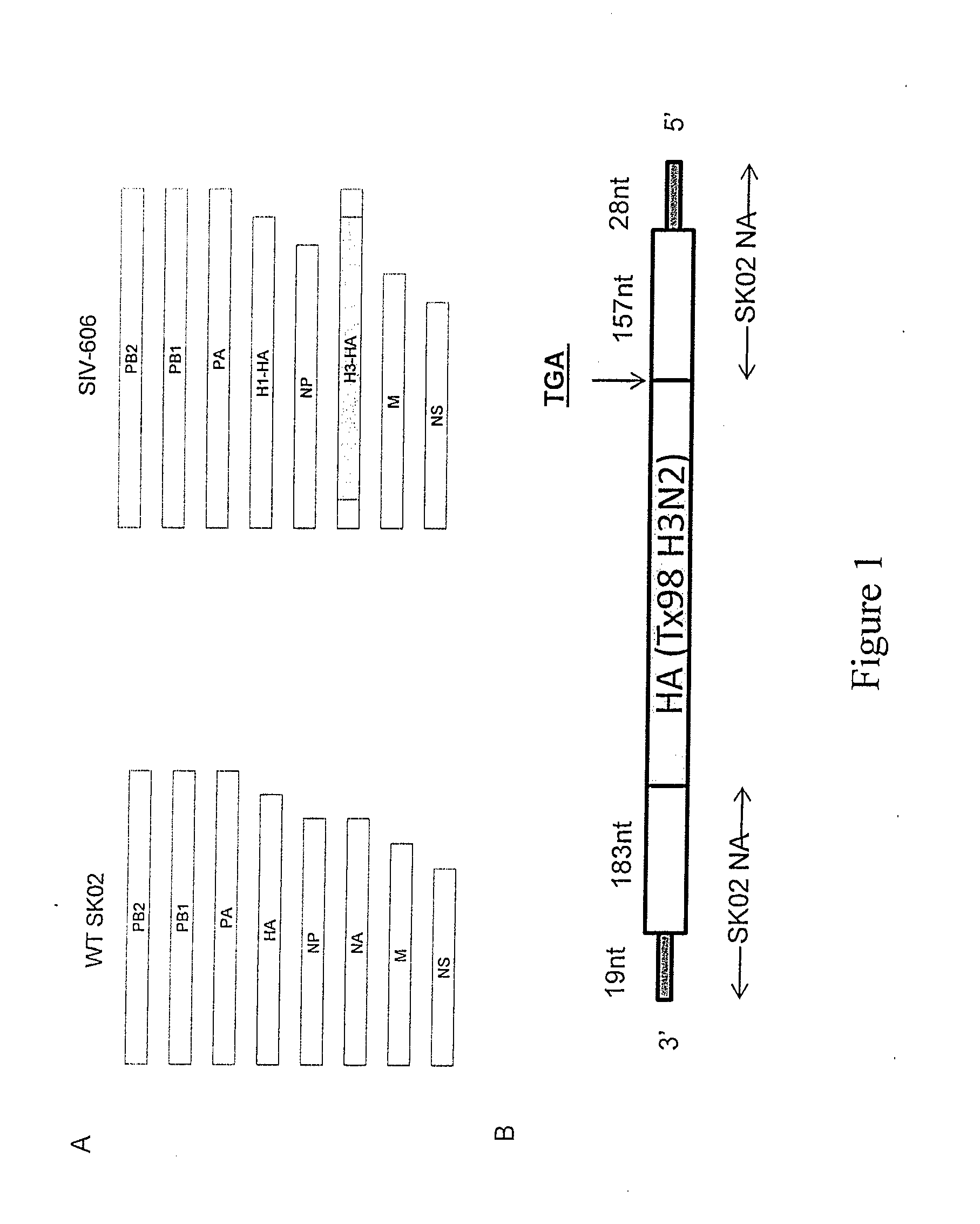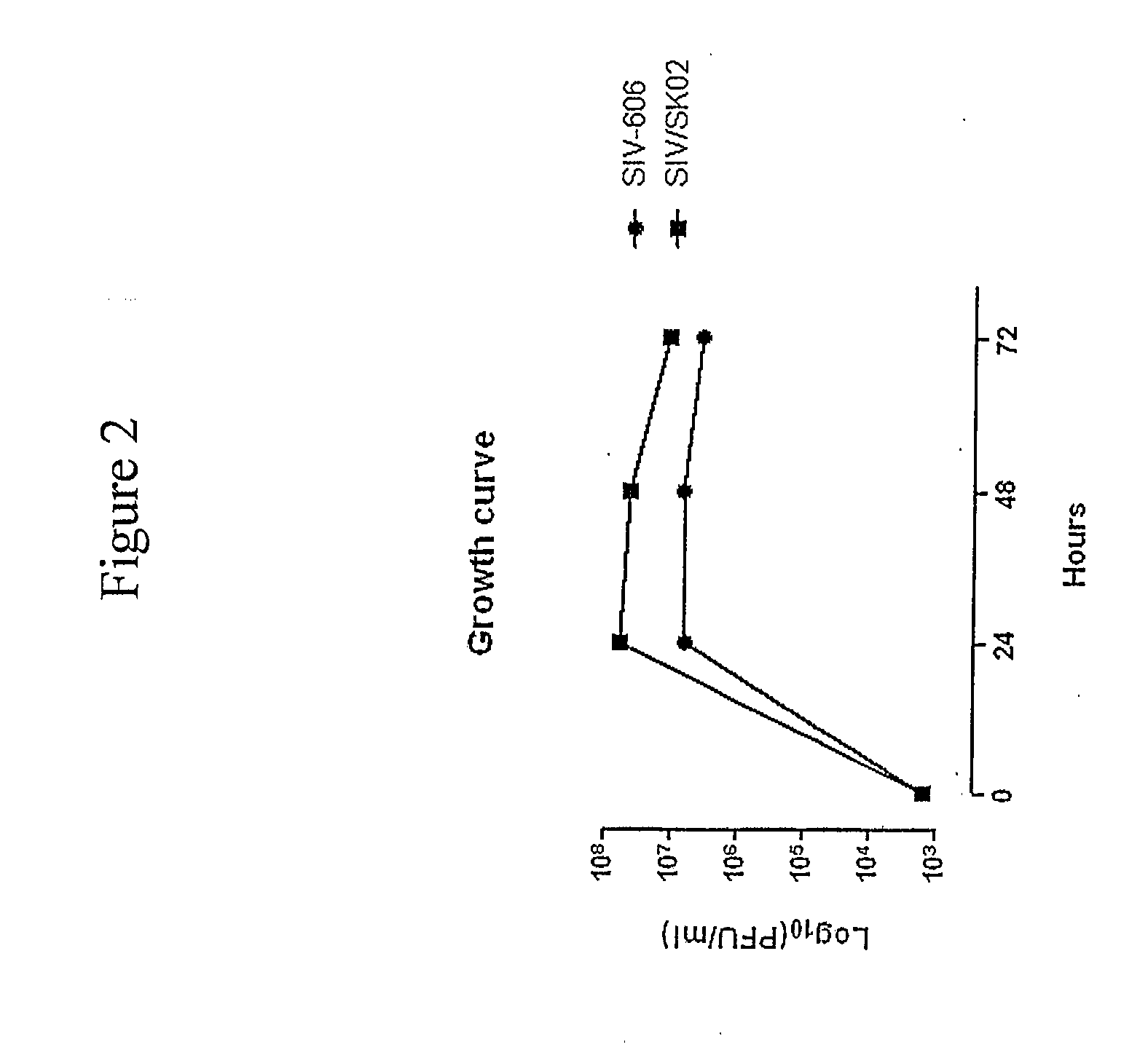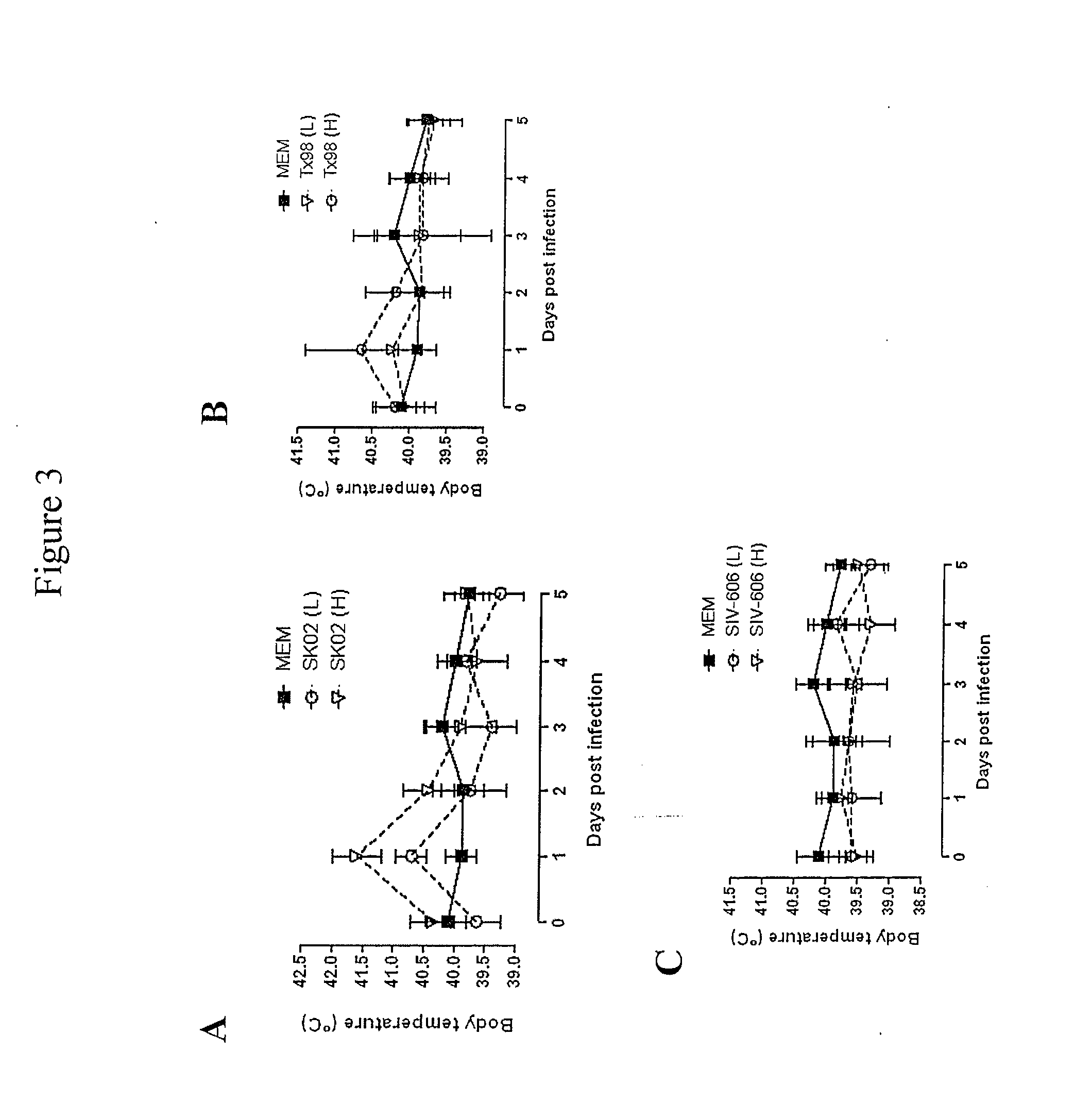Recombinant swine influenza virus and uses thereof
a technology of swine flu virus and recombinant swine flu, which is applied in the field of recombinant swine flu virus and immunogenic composition and methods, can solve the problem that current siv vaccines do not provide cross-protection against multiple antigenic siv variants
- Summary
- Abstract
- Description
- Claims
- Application Information
AI Technical Summary
Benefits of technology
Problems solved by technology
Method used
Image
Examples
example 1
Generation of a Recombinant Virus Including Both H1 and H3 HAs
[0160]A recombinant, chimeric influenza A virus possessing, an eight segmented genome, was produced as detailed below. The virus included seven segments of a swine H1N1 virus with the majority of the NA segment replaced by an H3 HA coding region sequence flanked by NA packaging sequences. The virus thus included HAs from two different types of swine influenza, H1 HA and H3 HA. Because NA is essential for virus propagation, the function of NA was provided by growing the virus in the presence of sialidase (neuraminidase).
[0161]In particular, in order to generate a recombinant swine influenza virus carrying two different HA molecules, the NA segment in an H1N1 swine influenza virus, A / swine / Saskatchewan / 18789 / 02, termed “SIV SK02” herein (obtained from the Prairie Diagnostic Services, Western College of Veterinary Medicine, University of Saskatchewan, Canada) was replaced with an H3 HA segment from the H3N2 Influenza A virus...
example 2
Characterization of SIV / SK-606
[0164]To confirm that recombinant virus SIV / SK-606 possessed both H1 and H3 HA segments in its genome, viral RNA was isolated from purified virons. Briefly, tissue culture grown viruses were collected by ultracentrifugation and subjected to a sucrose gradient centrifugation (Masic et al., J. Gen. Virol. (2009) 90:375-385). For RNA purification, purified virions were processed following manufacturer's instruction of Trizol (Invitrogen). Reverse transcription was performed using the Uni12 primer (Hoffman et al., Arch. Virol. (2001) 146:2275-2289) which specifically amplifies viral RNAs. PCR was carried out by using primers specific for H1 (Fw 5′ TGGCCAAACCATGAGACAAC 3′ (SEQ ID NO:27) and Bw 5′ GGCGTTATTCCTCAGTTGTG 3′ (SEQ ID NO:28)) and H3 HAs (Fw 5′ CGCAATCGCAGGTTTCATAG 3′ (SEQ ID NO:29) and Bw 5′ CAACCCAGAAGCAAGGCCTCAATCTTTGTATCCTGATTTCAGC 3′ (SEQ ID NO:30)).
[0165]While PCR products representing the H1 HA segment were detected only in the SK02 and the S...
example 3
Pathogenicity of SIV-606 in Pigs
[0170]The pathogenicity of SIV-606 was evaluated in pigs. Thirty-five 4-week old SIV-negative pigs were split randomly into seven groups of five pigs. These were infected intratracheally with 4 ml MEM containing 1×105 or 1×106 PFU / ml SK02 WT, SIV-606 or Tx98. The animals in the control group were mock infected with medium only (Table 1). Rectal temperature was monitored daily. On day 5 post infection pigs were euthanized and necropsies were performed. As shown in FIGS. 3A-3C, pigs infected with wild-type viruses had an increased temperature on day 1 post infection, and the temperature decreased gradually on the following days. However, pigs infected by SIV-606 did not show elevated temperatures compared to the control group. At necropsy, the macroscopic lung lesions were documented. The mock, SIV-606 high dose- and low dose-infected pigs did not show any typical macroscopic lung lesions. In contrast, gross lesions characterized as purple- to plum-colo...
PUM
| Property | Measurement | Unit |
|---|---|---|
| w/w | aaaaa | aaaaa |
| diameter | aaaaa | aaaaa |
| temperature | aaaaa | aaaaa |
Abstract
Description
Claims
Application Information
 Login to View More
Login to View More - R&D
- Intellectual Property
- Life Sciences
- Materials
- Tech Scout
- Unparalleled Data Quality
- Higher Quality Content
- 60% Fewer Hallucinations
Browse by: Latest US Patents, China's latest patents, Technical Efficacy Thesaurus, Application Domain, Technology Topic, Popular Technical Reports.
© 2025 PatSnap. All rights reserved.Legal|Privacy policy|Modern Slavery Act Transparency Statement|Sitemap|About US| Contact US: help@patsnap.com



